They were all men in the Chandrayaan-3 mission and they were confident of soft landing the country's moon lander on the lunar soil, a 'Mission Possible' after the failure of Chandrayaan-2.
Incidentally, unlike the Chandrayaan-2 mission, where a couple of women were in a lead role -- with Project Director M. Vanitha and Mission Director Ritu Karidhal Srivastava -- this time around it was an all male club.
In Chandrayaan-3, the Mission Director was Mohan Kumar and the Vehicle/Rocket Director was Biju C. Thomas.
"There are about 54 female engineers/scientists who worked directly in the Chandrayaan-3 mission. They are associate and deputy project directors and project managers of various systems working at different centres," a senior official of Indian Space Research Organisation (ISRO) had told IANS preferring anonymity.
Well, the Men in Chandrayaan-3 are as follows:
Dr. S. Somanath, Chairman, ISRO
Most of the Hindu names signify a God. In the case of S. Somanath, Chairman, Indian Space Research Organisation (ISRO), the name means Master of the Moon.
Incidentally, it was his responsibility to see India’s moon lander soft lands successfully on Wednesday evening.
As a young engineer, Somanath dared to set right an anomaly along with two of his seniors in a Polar Satellite Launch Vehicle (PSLV) that was ready for a takeoff.
Normally in such a situation, the rocket launch would have been postponed, draining the fuel and other laborious processes. The other option was trying to set the problem right, when the rocket is fueled up-a risky proposition.
However, the three brave officials including the young Somanath set right the problem. The rocket lifted off safely and made the mission a success.
Nearly two decades later, as the head of ISRO, Somanath seems to have set right the issues that resulted in the crash landing of India’s first moon lander called Vikram.
Son of a Hindi teacher, Somanath was interested in science. Later he pursued B.Tech in Mechanical Engineering but had an active interest in rocketry.
Like a dream come true, in 1985 Somanath got a job with ISRO and joined the Vikram Sarabhai Space Centre (VSSC) in Thiruvananthapuram, which was responsible for rockets.
Somanath took his B. Tech in Mechanical Engineering from TKM College of Engineering, Kollam and Masters in Aerospace Engineering from Indian Institute of Science, Bangalore with specialisation in Structures, Dynamics and Control.
Rising up the ranks, he joined GSLV MkIII Project during 2003 and was the Deputy Project Director responsible for overall design and integration of India’s heaviest and most powerful rocket. He was the Project Director of GSLV Mk-III (now LVM-3) from June 2010 to 2014.
Somanath also led the team of LPSC (ISRO’s Liquid Propulsion Systems Centre) to complete the development and qualification of CE20 cryogenic engine and the C25 stage, which was successfully flown in GSLV MkIII-D1 flight.
Prior to becoming ISRO Chairman, Somanath headed VSSC as its Director.
Dr. S. Unnikrishnan Nair, Director, Vikram Sarabhai Space Centre
He is a Distinguished Scientist heading the Vikram Sarabhai Space Centre (VSSC) - India’s rocket centre - as well as a Malayalam short story writer.
Dr. S. Unnikrishnan, is a B.Tech in Mechanical Engineering from Kerala University, ME in Aerospace engineering from the Indian Institute of Science, Bengaluru and a doctorate in Mechanical Engineering from Indian Institute of Technology-Madras.
That apart, he also holds an MA in Telecommunications and Space Law from NALSAR, Hyderabad.
Unnikrishan began his career in VSSC in 1985 and was involved in the development of various aerospace systems and mechanisms for Indian rockets - PSLV, GSLV and LVM3.
He played a key role in the maiden orbital re-entry experiment, Space Capsule Recovery Experiment (SRE), right from the study phase onwards to its mission accomplishment in 2007.
He was associated with Human Spaceflight Programme from its study phase since 2004 and was the Project director for Pre-project technology development activities.
Unnikrishnan led the project team for defining the Vehicle configuration, Systems engineering and in identifying various critical technology development areas to initiate the pre-project activities.
As founding Director of the youngest Centre in ISRO, the Human Space Flight Centre (HSFC) Unnikrishnan has led the team for Gaganyaan Project and established the Astronaut Training Centre at Bangalore in HSFC at Bangalore.
Dr. P. Veeramuthuvel, Project Director, Chandrayaan-3
Son of a railway employee, Dr. P. Veeramuthuvel always aimed for the skies. Hailing from Tamil Nadu’s Villupuram district, Veeramuthuvel completed his Diploma in Mechanical Engineering and went on to get a Degree in Engineering. Later he did his PhD at IIT-Madras. He joined ISRO in 2014.
M. Shankaran, Director, U R Rao Satellite Centre
A Distinguished Scientist M. Shankaran took over as Director of U R Rao Satellite Centre (URSC), the lead Centre in the country for design, development and realisation of all satellites of ISRO, on June 1, 2021.
He is currently leading satellite fraternity to realise various types of satellites to meet the national requirements in the areas like communication, navigation, remote sensing, meteorology and inter-planetary exploration.
During his 35 years of experience in URSC/ISRO, he has contributed primarily in the areas of Solar arrays, Power systems, Satellite Positioning System and RF communication systems for Low Earth Orbit(LEO) Satellites, Geostationary Satellites, Navigation Satellites and Outer Space Missions like Chandrayaan, Mars Orbiter Mission (MOM) and others.
He is now leading the efforts to the miniaturisation of avionics systems, indigenisation of electronics & power system components, micro/mini satellite bus development and others. He is also spearheading the avionics system design, realisation and qualification for the Gaganyaan Programme.
He joined the ISRO Satellite Centre (ISAC), currently known as URSC after obtaining his Master's degree in Physics from Bharathidasan University, Tiruchirappalli in 1986.
Dr. V. Narayanan, Director, Liquid Propulsion Systems Centre
He is the man providing the propulsion power to Indian rockets. Dr V.Narayanan, an Alumni of Indian Institute of Technology- Kharagpur and has taken his M.Tech with First Rank in Cryogenic Engineering in 1989 and Ph.D in Aerospace Engineering in 2001.
A rocket propulsion expert Narayanan joined ISRO in 1984 and functioned in various capacities before becoming Director of the Centre. As Project Director for C25 Cryogenic Project, he led the team and successfully developed C25 Cryogenic Stage.
When India was denied the complex Cryogenic Propulsion Technology for GSLV Mk-II vehicle, Narayanan played a crucial role in the successful development of Cryogenic Upper Stage (CUS) and contributed in making it operational for the GSLV Mk II vehicle.
He has guided the team and designed a 200-tonne thrust Lox-Kerosene Semi Cryogenic Rocket Engine.
During the initial period from 1984 to 1988 in ISRO, he also contributed to the Solid Propulsion System realisation for launch vehicles. As Associate Director of LPSC, he was guiding the liquid propulsion activities of ISRO and was instrumental in finalising the Liquid Propulsion Roadmap of ISRO for the next 20 years.
A. Rajarajan, Director, Satish Dhawan Space Centre
He first joined the India’s rocket centre – Vikram Sarabhai Space Centre (VSSC) and over the years risen through the ranks and is now heading the Satish Dhawan Space Centre (SDSC) that provides the solid fuel for the rocket and also the country’s rocket port in Sriharikota in Andhra Pradesh.
A Mechanical Engineer, Rajarajan joined VSSC’s Fiber Reinforced Plastics Division and over the years grew within the organisation and assumed additional challenges.

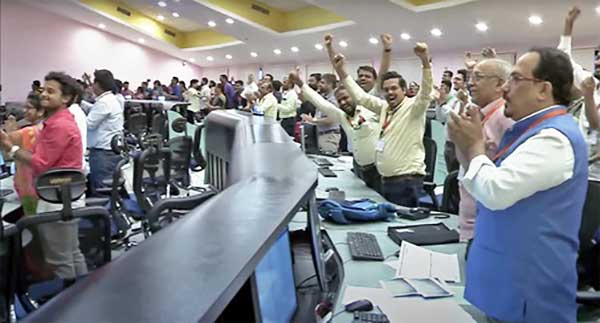
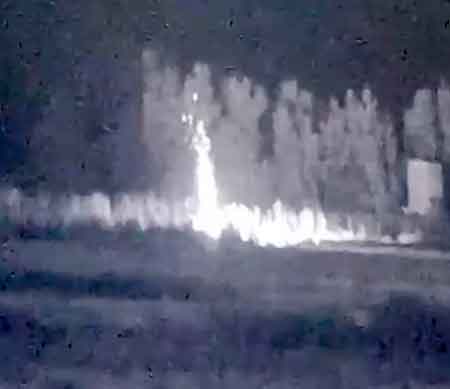
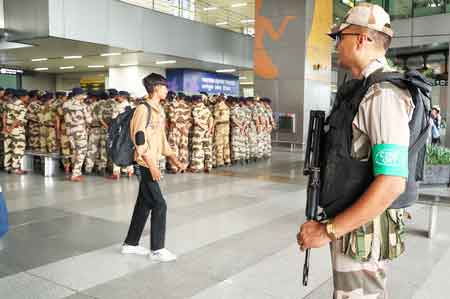
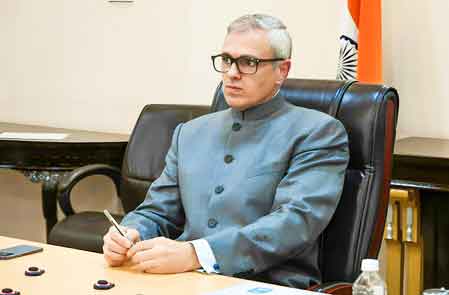
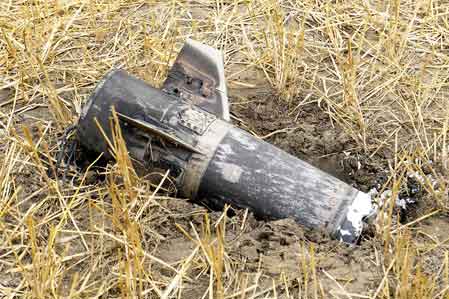
Indian armed forces destroy Pakistani posts, launch pads; intercept multiple Pakistani drones
In yet another befitting reply to Pakistan's nefarious activities, the Border Security Force (BSF) has completely destroyed a Pakistani post and a terrorist launch pad in Looni, District Sialkot, opposite Akhnoor area, from where the tube drones were being launched to attack India.
32 airports shut till May 15 as tensions escalate between India-Pakistan
The Airports Authority of India (AAI) and relevant aviation authorities have issued a series of Notices to Airmen (NOTAMs), announcing the temporary closure of 32 airports across northern and western India for all civil flight operations, effective till May 14.
IMF reimbursement to Pak will not help in de-escalation of hostilities with India: J&K CM Omar
Jammu and Kashmir (J&K) Chief Minister, Omar Abdullah on Saturday expressed serious concern over the International Monetary Fund (IMF) reimbursement to Pakistan, which the CM said would not help de-escalation of hostilities between India and Pakistan.
Missile-like object falls from sky in Balotara, drone debris found in Jaisalmer
A loud explosion was heard in the Gida area of Balotara late on Friday night as a missile-like object fell from the sky near Dewasi ki Dhani of Jagram ki Dhani Panchayat.
Condemning egregious terror attack in Pahalgam, G7 appeals to India, Pak to de-escalate
The G7 nations on Saturday urged immediate de-escalation amid rising tensions between India and Pakistan following alleged missile strikes.
India says highly revered Nankana Sahib Gurdwara in Pakistan's Punjab safe
The highly revered Gurdwara Nankana Sahib, the birthplace of the founder of the Sikh religion, Guru Nanak Dev, in Pakistan's Punjab province is safe, the Indian government said.
Pakistan closes airspace temporarily after India accuses it of using civilian flights as shields
Pakistan on Saturday shut down its airspace temporarily, hours after India accused the former of using commercial flights as shields amid drone attacks.
Loud blasts cause panic in J&K's Srinagar, Akhnoor areas
Panic gripped Jammu and Kashmir's Srinagar city and Akhnoor area in Jammu division on Saturday as massive blast-like sounds were heard forcing morning walkers to rush back home while overnight pounding of civilian areas in Poonch and Rajouri districts by Pakistan Army caused major damage.